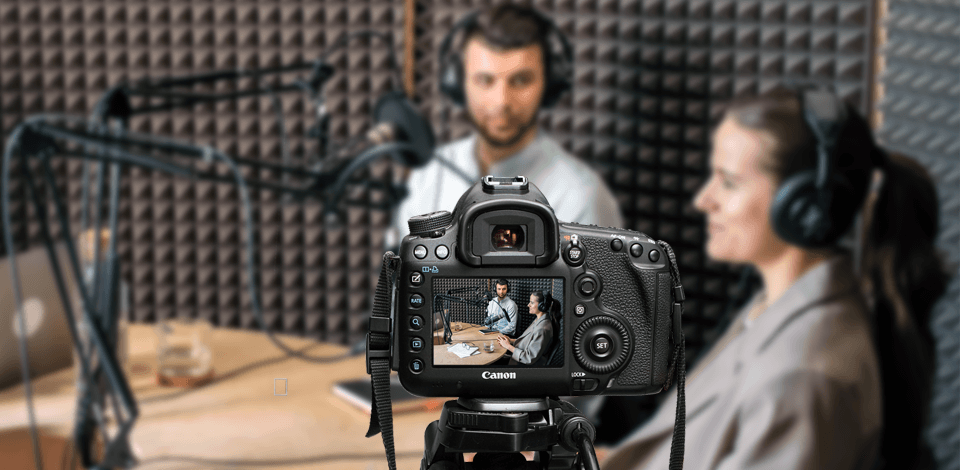
I thought I could get by without a special podcast camera, and a regular one would do, but I was wrong. During a recording session at FixThePhoto, the autofocus was unreliable, and the image quality left much to be desired. Some parts of the scene were too dark, while faces looked washed out.
The situation reached a breaking point when the camera overheated and failed at the most inappropriate moment. That’s when I felt it was high time to search for a new gear with a proper price-quality ratio. Together with my team, I tested 15+ cameras for podcasting to find the best one.

While searching for a reliable model, I understood that picking the right podcasting camera is just one piece of the puzzle. Your recording setup is equally vital for a good result. It is important to have a well-lit recording space. Natural light is a good starting point, but softboxes or LED panels provide more flexibility.
It is also crucial to declutter the background so that not a single element steals attention from you. Another aspect is soundproofing. You may use foam panels, rugs, or even bookshelves to achieve clear sound.
Tripod or mount. To get professional footage, you need to stabilize your camera. Foolproof methods are to use a tripod or a desk-mounted arm. The latter option is perfect for limited recording spaces, where every inch matters. If you use a webcam, opt for a flexible mount so that you can adjust the angle the way you want.
External microphone. Every second podcast camera is equipped with a built-in mic. Still, to get the clearest possible sound, it is a good idea to purchase an external mic. If you are going to record in untreated rooms, choose a dynamic podcast microphone and your listeners will thank you.
Lighting gear. When buying podcast equipment, make sure to get quality lighting devices. For starters, a traditional 3-point setup will do. It includes a key light, a fill light, and a backlight. If you have a limited budget, a ring light and softbox can do the trick.
Clean background. To ensure the audience fully concentrates on you, the background should be distraction-free. For instance, you can choose a neutral wall, bookshelves, or even a branded backdrop. To add a bit of dynamics, attach an LED light strip or a color gradient with a smart bulb behind you.
Must-Have Podcasting Software

At first, I thought that picking a camera would be the hardest decision. But quite soon, I realized how much podcast recording software impacts quality. I often use OBS Studio for recording footage. The program gives me full control over framing and audio sync during live episodes.

When I needed to switch angles on the fly, I resorted to Ecamm Live. Its user-friendly interface makes real-time adjustments seamless, ensuring smooth transitions during dynamic recordings.

For video editing, I use Adobe Premiere Pro. There are handy tools to edit videos, improve colors, fix sound irregularities, and its advanced timeline features allow precise cuts and polished final outputs.
Generally, you can use your smartphone for podcasting, especially since they support high-res video capture. However, there are certain limitations to keep in mind. If you need to record videos for many hours in a row, your phone may overheat. Besides, the battery may die at the most unsuitable moment.
When using a dedicated video camera for podcast, you get all the needed controls at hand. The situation is different with smartphones. They may lack manual controls for adjusting exposure, white balance, and focus. Another issue is quick storage filling. If you record in 4K, the embedded storage will be too scarce. So, you’ll need to transfer files very frequently.
Sony Alpha ZV-E10  ★★★★★ (5/5)
★★★★★ (5/5)
Together with FixThePhoto editors, I tested multiple gears. Based on the results, we concluded that the Sony Alpha ZV-E10 is the best camera for podcasting. The image quality is terrific thanks to reliable autofocus and amazing low-light performance.
|
Amazon:
|
500+ bought in the past month
|
|
B&H:
|
6K+ bought in the past year
|
|
Adorama:
|
4K+ bought in the past year
|
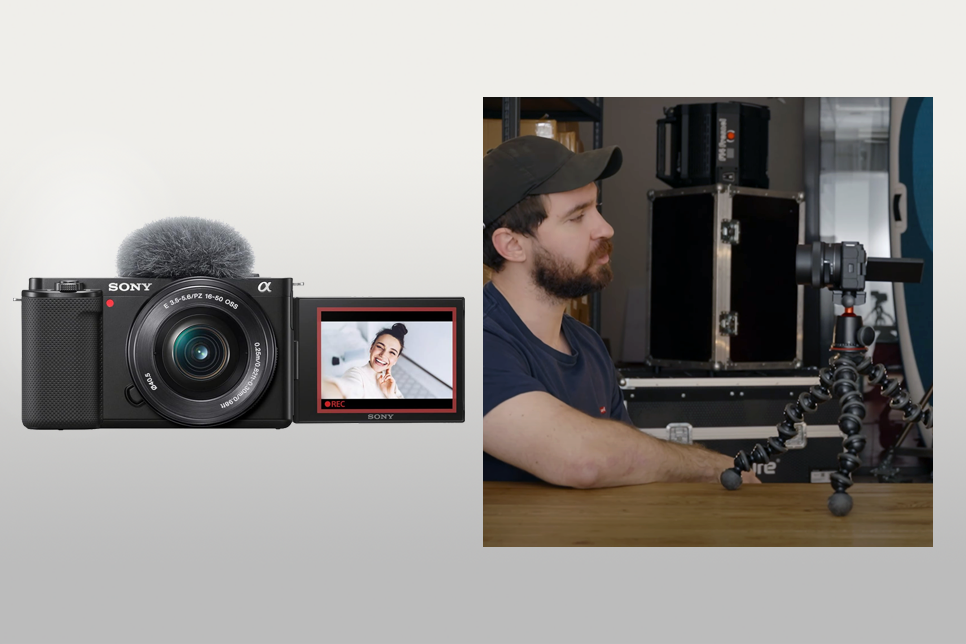
Tati has extensive video recording and editing experience. When she mentioned that this is one of her favorite Sony cameras for content creation, I knew I had to test it. I spent several days recording interviews with different settings, lenses and audio parameters. Now I know that this compact camera for podcast recording can produce studio-quality visuals.
This camera delivers crisp 4K video with rich colors, so it will please users interested in creating high-quality video podcasts. It has an integrated microphone that is suitable for basic recording. I also like a flip-out screen because filling it is easy. The autofocus is lightning-fast, particularly when paired with genuine Sony lenses.
It is very impressive how this camera can focus on my face, no matter how active the shooting is. Plus, there is a Product Showcase mode, which comes in handy if you need to record podcast episodes with both audio and visuals. The only minor drawback I’ve noticed is the rolling shutter. It causes some distortion in quick scenes.
Specs:
|
Frame rate
|
Up to 120fps
|
|
Resolution
|
4K UHD
|
|
Storage capacity
|
SD card (UHS-I)
|
|
Amazon:
|
3K+ bought in the past month
|
|
B&H:
|
40K+ bought in the past year
|
|
Adorama:
|
31K+ bought in the past year
|
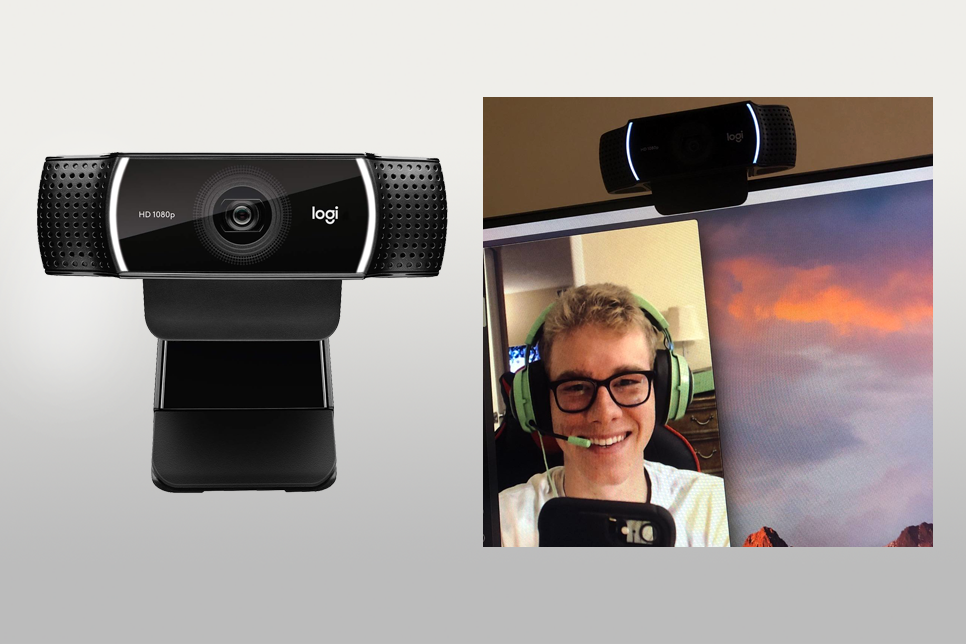
The Logitech C922x Pro has been my main streaming camera for many months. Recently, I decided to try it out for podcasting too. It’s definitely a versatile model that produces decent video quality at a moderate cost.
I shot with 1080p resolution and got a clear, sharp image. When testing the camera at 60fps at 720p, everything looked really smooth. Another bragging point of the camera is how well it works in low light. I didn’t have to add any extra lights to keep quality of the video high. The autofocus is very reliable, even when I’m moving around.
Setup boils down to plugging and playing. This podcasting camera also has a background removal feature, but it can be a bit finicky. If you don’t have a plain background and good lighting, you can spot some odd-looking outlines. As for built-in microphones, they are decent for everyday use, but if you want to create a more professional podcast setup, you’d better invest in external ones.
Specs:
|
Frame rate
|
1080p at 30fps / 720p at 60fps
|
|
Resolution
|
Full HD 1080p
|
|
Storage capacity
|
N/A (USB-powered webcam)
|
|
Amazon:
|
200+ bought in the past month
|
|
B&H:
|
3K+ bought in the past year
|
|
Adorama:
|
1K+ bought in the past year
|
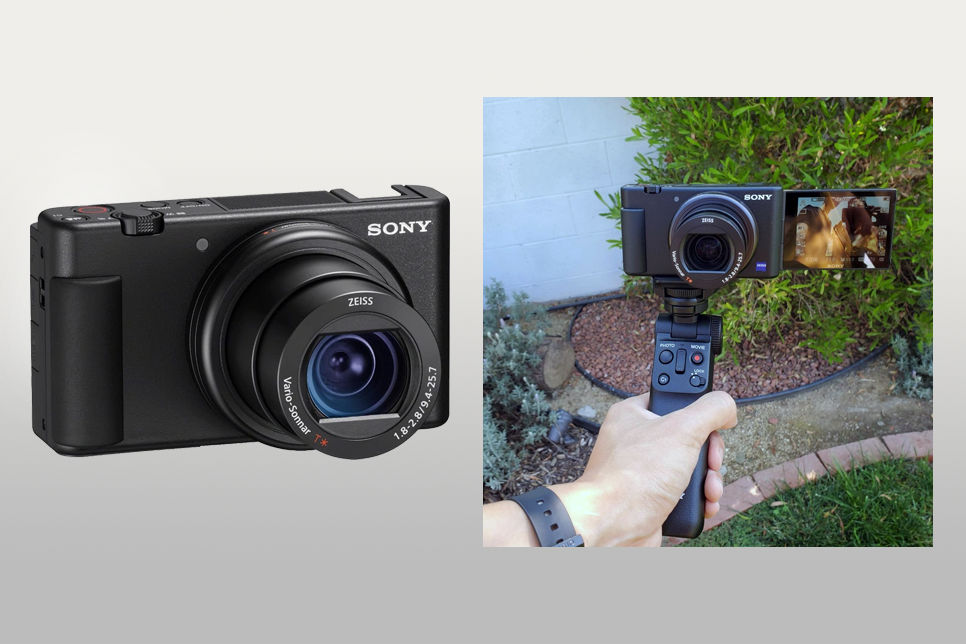
The Sony ZV-1 is definitely one of the best cameras for podcasts. During tests, I was impressed by its ability to capture clear, detailed videos. What’s more, it has a 20.1MP 1-inch sensor and fast 24-70mm lens, so you can capture crisp videos in poorly lit places.
One of my favorite features is the real-time autofocus. It’s extremely helpful when recording podcasts, because my face is always sharp and I don’t have to spend time on manual adjustments. The fully articulated screen is a fantastic addition. With it, I can frame my shots without restrictions.
I appreciate that the manufacturer embedded a mic. It’s great for recording podcasts without the hassle of dealing with extra equipment. The battery life is a bit short, but that’s a small price to pay for such a versatile camera. If you’re looking for a do-it-all camera for your podcast, this is a great option to consider.
Specs:
|
Frame rate
|
4K at 30fps / 1080p at 120fps
|
|
Resolution
|
20.1MP Exmor RS CMOS sensor
|
|
Storage capacity
|
SD card (sold separately)
|
|
Amazon:
|
500+ bought in the past month
|
|
B&H:
|
5K+ bought in the past year
|
|
Adorama:
|
3.5K+ bought in the past year
|
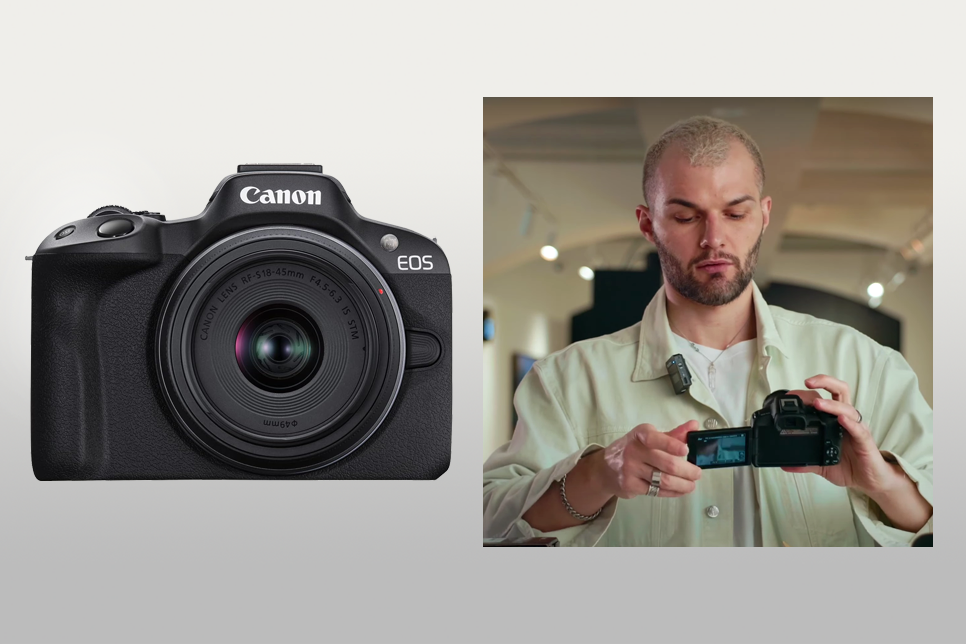
The Canon EOS R50 has been a staple in the FixThePhoto team’s camera bags. It’s the perfect blend of portability and performance. Besides, it is very easy to use, whether you’re a seasoned photographer or just starting. I’ve tried it for different activities, including solo podcasting, interview recording, and more. The results were always great.
In terms of color processing, it’s the best camera for podcast recording. There is also a smart autofocus that keeps your face sharp and detailed, no matter how much you move while speaking. Thanks to its 24.2MP sensor and uncropped 4K, this Canon camera produces fantastic image quality every time I switch it on.
Those seriously interested in podcasting will definitely appreciate smooth smartphone connectivity. In other words, you can get the most out of the remote recording. You can use the kit lens, but don’t expect much of it in terms of sharpness and flexibility. For a more cinematic feel, invest in a more advanced lens.
Specs:
|
Frame rate
|
4K 30fps, Full HD 120fps
|
|
Resolution
|
24.2 MP
|
|
Storage capacity
|
SD/SDHC/SDXC UHS-I
|
|
Amazon:
|
1K+ bought in the past month
|
|
NexiGo:
|
20K+ bought in the past year
|
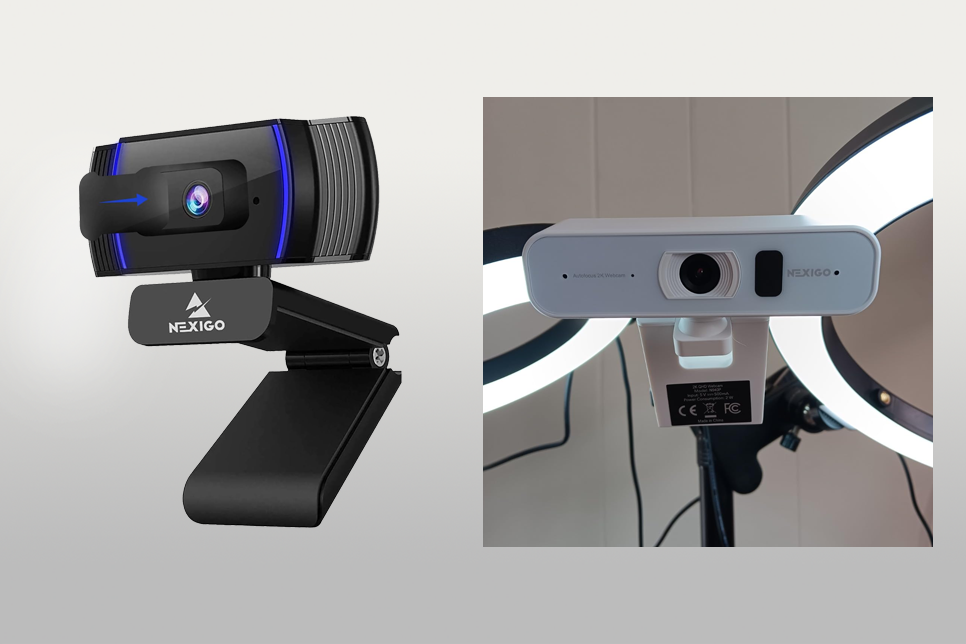
If you’re looking to start without breaking the bank, the NexiGo N930AF is a solid camera for podcast recording. The video quality is more than adequate, and the autofocus copes with its core task perfectly, even if I move around a bit. The remote control is a fantastic addition. I can tweak settings on the fly without interrupting my recording.
I like that the camera has a privacy shutter, but it’s not an ideal one. The autofocus is good, but sometimes it fails to keep up with my movements. Besides, you need to adjust settings manually as the default ones don’t guarantee perfect results.
What’s more, I had to spend time and use third-party software to adjust sharpness and exposure. That wasn’t very convenient. Still, for the price, it’s a great webcam for podcasting. It’s reliable and offers a lot of practical features.
Specs:
|
Frame rate
|
30fps
|
|
Resolution
|
1920x1080
|
|
Storage capacity
|
N/A (USB webcam)
|
|
Amazon:
|
6K+ bought in the past month
|
|
Ankerwork:
|
80K+bought in the past year
|
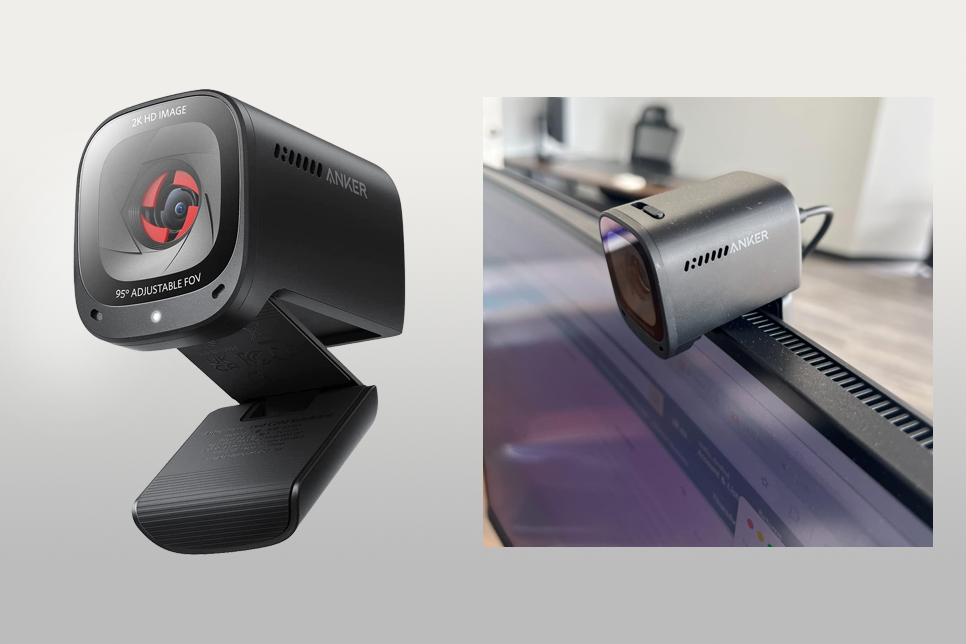
I’d always assumed our boss was using a pro-grade camera for our video conferences. The video was always so clear and vibrant. So, when I found out she was using the Anker PowerConf C200, a regular webcam, I was very stunned. Intrigued, I decided to test it for my podcast and see if it could handle the task.
The 2K resolution on this camera deserves much praise. The images are so clear and detailed, even in low light. I love that I can adjust the field of view (from 65° to 95°) to suit different situations. To my mind, this is one of the top cameras for podcast recording if you need to get tight close-ups or wider shots.
The built-in mics brag about AI noise-canceling, which filters out background noise efficiently. For a more polished podcast, you may want to invest in an external mic. However, if you’re looking for a simple, out-of-the-box solution, this little gadget is surprisingly capable.
Specs:
|
Frame rate
|
30fps (2K), 60fps (1080p)
|
|
Resolution
|
2K (2560 × 1440)
|
|
Storage capacity
|
N/A (USB webcam)
|
|
Amazon:
|
150+ bought in the past month
|
|
B&H:
|
20+ bought in the past year
|
|
Adorama:
|
70+ bought in the past year
|
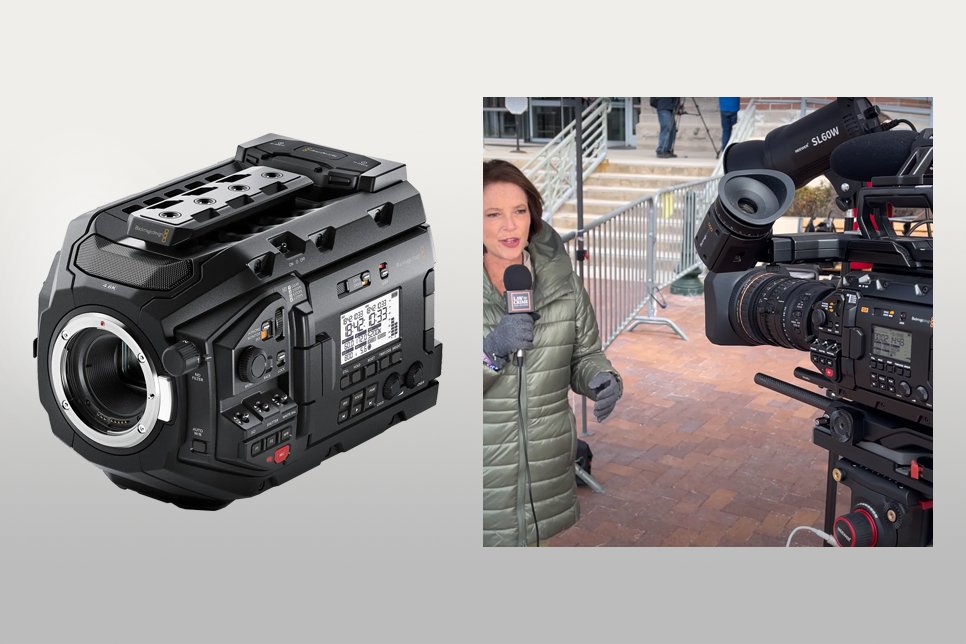
The Blackmagic URSA Mini Pro is a beast of a camera. It produces stunning cinematic footage, but you have to pay a hefty sum for this quality. It’s definitely the best podcasting camera for serious filmmakers, but it’s just not a practical choice for most users.
We keep this video cameras in our studio for high-end projects. When I used it for a video podcast, the results were stunning. The image quality was so rich and cinematic. No other cameras I’d tested can stay on par with this model.
Specs:
|
Frame rate
|
Up to 120 fps (at 1080p)
|
|
Resolution
|
4.6K (4608 x 2592)
|
|
Storage capacity
|
CFast 2.0, SD, SSDs via USB-C
|
|
Amazon:
|
500+ bought in the past month
|
|
B&H:
|
5K+ bought in the past year
|
|
Adorama:
|
3K+ bought in the past year
|
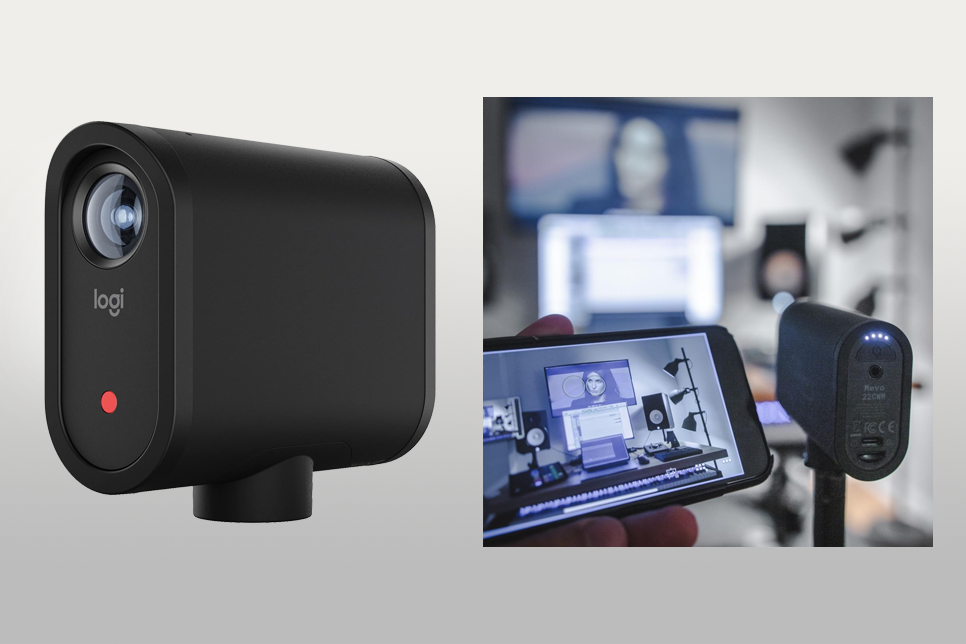
After reading many positive Amazon reviews, I decided to give the Logitech Mevo Start a try. The 1080p video is impressive. You can rarely get this quality for such money. My podcasts acquired depth and lifelike colors.
I also appreciate the possibility of controlling this camera using an app. It’s user-friendly and allows managing everything from a distance. Besides, it is compatible with YouTube, Facebook Live, and OBS.
Still, the camera has certain weak points. First of all, the digital zoom is less efficient in larger spaces. Also, if you’re planning on long recording sessions, the battery life may not last the entire time.
Specs:
|
Frame rate
|
30 fps (up to 60 fps in 720p)
|
|
Resolution
|
1080p HD
|
|
Storage capacity
|
microSD
|
|
Amazon:
|
400+ bought in the past month
|
|
NexiGo:
|
6K+ bought in the past year
|

If you are searching for an affordable video camera for podcasting, the NexiGo N660P can cater to your needs. The setup process is intuitive – just plug it into the USB port and you are good to go. The video quality is fantastic, and the adjustable focus is a really nice touch.
I like how securely this camera clips onto my monitor. So, I may not worry if fall down while recording. Plus, the camera offers a few background and audio options. It is a good choice for podcasters who are just starting out and want something simple to use.
One minor drawback of the camera is its performance in low-light conditions. If you often record in dark rooms, you will feel limited. Still, considering its affordable price, the N660P is still a good choice.
Specs:
|
Frame rate
|
30 fps
|
|
Resolution
|
1080p HD
|
|
Storage capacity
|
N/A (USB webcam)
|
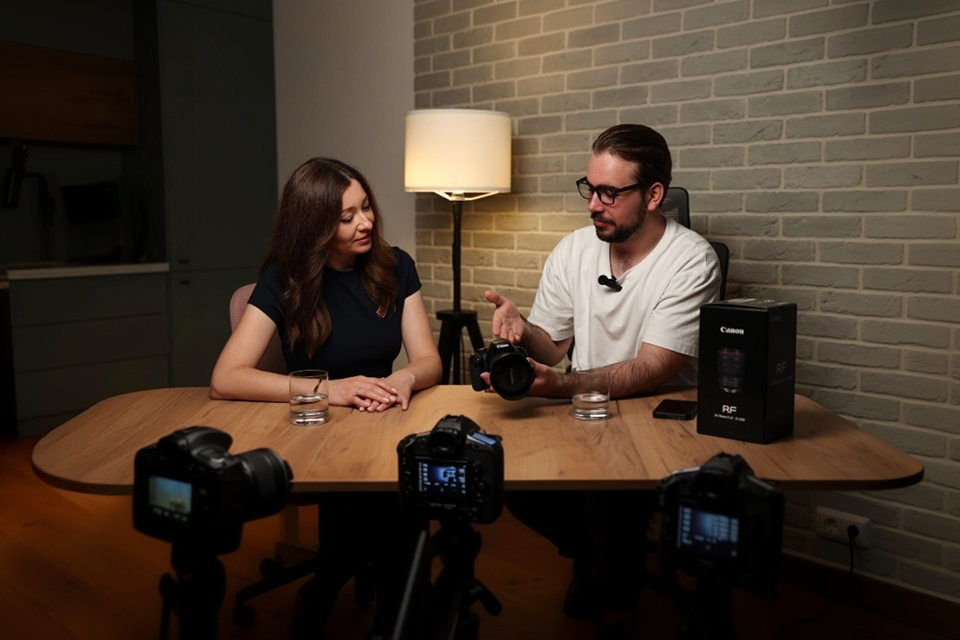
Our FixThePhoto team consists of knowledgeable and talented photographers and videographers. Together with my colleagues, I tested and rated cameras in changeable real-world settings to provide readers with in-depth and unbiased reviews.
While running tests, we focused on the different capabilities of podcast cameras. For instance, we recorded complete podcast episodes, experimented with different lighting scenarios, and assessed the efficiency of autofocus, exposure, and thermal management.
I concentrated on the cameras’ audio synchronization, image stabilization, and connectivity features. I believe they are critical for a smooth podcasting workflow.
Some models suffered from video lag or overheating during long recording sessions. Anyway, I managed to identify cameras that are specifically designed to meet the needs of podcasters, offering stable performance, smooth footage, and easy setup.
I’ve tried out many different cameras for this review, but not all of them were a perfect match for podcasting. Some just didn’t produce the video quality I was looking for, and others were missing essential features, e.g., good autofocus or the ability to handle low-light conditions. Here are a couple of popular options that didn’t make the final list:
Every camera I tested had its own unique features. However, when it comes to podcasting, it is important to have a device with consistent focus, good exposure control, and a straightforward setup process.